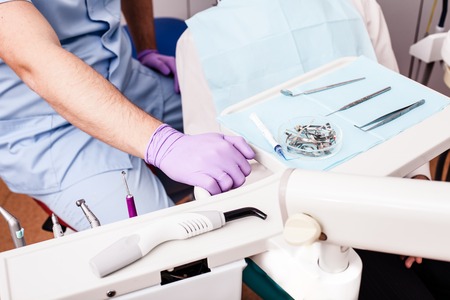Introduction to Dental and Vision Insurance in the U.S.
If you’re new to the world of health coverage in the United States, figuring out dental and vision insurance can feel confusing at first. Most people know about health insurance, but dental and vision plans are actually separate. These plans help cover costs for things like teeth cleanings, fillings, eye exams, and glasses—things that regular health insurance usually doesn’t pay for.
What Are Dental and Vision Insurance Plans?
Dental and vision insurance are types of supplemental insurance. “Supplemental” just means they add extra coverage beyond your main health plan. Here’s a quick look at what each one focuses on:
| Type | Covers | Common Examples |
|---|---|---|
| Dental Insurance | Preventive care for teeth and gums | Cleanings, X-rays, fillings, crowns |
| Vision Insurance | Eye health and eyewear | Eye exams, prescription glasses or contacts |
Why Do Dental and Vision Insurance Matter?
In the U.S., dental and vision care aren’t usually included with standard health insurance plans. That means if you don’t have these extra plans, you might have to pay the full cost out of pocket for routine checkups or treatments. Regular dental and vision checkups are important because they help catch problems early—like cavities or changes in eyesight—before they get more serious (and expensive).
How Do People Get Dental and Vision Insurance?
You can get dental and vision insurance in a few ways:
- Through an employer: Many jobs offer optional dental and vision plans as part of their benefits package.
- On your own: You can buy individual plans directly from insurance companies.
- Through government programs: Some people qualify for Medicaid or Medicare plans that include limited dental or vision coverage.
A Quick Comparison with Health Insurance
| Type of Insurance | Main Focus |
|---|---|
| Health Insurance | Covers medical care like doctor visits, hospital stays, surgeries |
| Dental Insurance | Covers preventive and basic dental care |
| Vision Insurance | Covers eye exams and eyewear needs |
If you want to keep your smile bright and your eyesight sharp, having both dental and vision insurance makes a big difference—especially in the U.S. where these types of care often aren’t covered by regular health insurance plans.
Typical Coverage: What’s Included in Dental and Vision Plans
What’s Usually Covered in Dental Insurance
Dental insurance is pretty common in the US, especially if you get benefits through your job. But what does it really cover? Most plans break things down into three groups—preventive, basic, and major services. Here’s a simple breakdown:
| Service Type | Examples | Is It Covered? |
|---|---|---|
| Preventive Care | Cleanings, routine exams, X-rays, fluoride treatments (for kids) | Usually 100% covered |
| Basic Procedures | Fillings, simple tooth extractions, some emergency care | Typically 70-80% covered |
| Major Procedures | Root canals, crowns, bridges, dentures | Usually 50% covered (sometimes less) |
Real-life example: Say you go in for your regular cleaning and X-rays. Your plan will probably cover the whole bill. But if you need a cavity filled, you’ll likely pay about 20–30% of the cost out of pocket. If you need a crown, expect to pay about half.
What’s Usually Covered in Vision Insurance
Vision insurance is all about eye health and helping with the cost of glasses or contacts. These plans work a little differently from dental insurance—they usually focus on discounts and allowances instead of percentages. Here’s what you can expect:
| Service Type | Examples | Is It Covered? |
|---|---|---|
| Eye Exams | Routine vision checkups, eye health screenings | $10-$20 copay per visit (often once a year) |
| Lenses & Frames | Eyeglass lenses and frames, contact lenses (in place of glasses) | $120–$200 allowance per year (varies by plan) |
| Lens Enhancements* | Anti-glare coating, transition lenses, progressive lenses | You pay extra; plans may offer some discount |
*These “add-ons” can really bump up your out-of-pocket costs. Always check what’s included before picking fancy options.
Real-life example: Let’s say you use your plan for an annual eye exam and get new glasses. The exam might only cost $15 with insurance. For glasses, if your frames are $180 and your plan allowance is $150, you’ll just pay the $30 difference.
A Few Things Not Typically Covered
- Dentistry: Cosmetic procedures like teeth whitening or veneers are usually not covered.
- Vision: LASIK surgery isn’t usually included—some plans offer a small discount but not full coverage.
- Dental & Vision: Most plans don’t cover replacement if you lose your glasses or retainer unless there’s accidental damage protection.
A Quick Side-by-Side Comparison Table:
| Dental Insurance Example | Vision Insurance Example | |
|---|---|---|
| Main Focus | Mouth & teeth health | Eye health & vision correction |
| Routine Visits | Covers cleanings & exams | Covers annual eye exam |
| Main Hardware | N/A (but covers dentures/bridges) | Covers glasses/contacts allowance |
This quick overview gives you a feel for how dental and vision insurance work separately—and why it matters to know exactly what’s covered before scheduling your next appointment or shopping for new glasses.
![]()
3. Common Exclusions: What’s Usually Not Covered
When you first sign up for dental and vision insurance, it’s easy to assume that every visit, procedure, or treatment is covered. But the reality is, there are a lot of common exclusions—things that your plan won’t pay for. Understanding these can help you avoid surprise bills and plan better for your health needs. Let’s look at some everyday scenarios and what usually isn’t included.
Dental Insurance: Typical Exclusions
Dentists do more than just clean teeth, but not every service is part of your insurance package. Here are some common exclusions:
| Treatment/Procedure | Is It Usually Covered? | Real-Life Example |
|---|---|---|
| Cosmetic Procedures (e.g., teeth whitening, veneers) | No | You want whiter teeth for a wedding—insurance won’t cover whitening treatments. |
| Orthodontics (e.g., braces for adults) | Rarely (often only for kids under 18) | You’re an adult needing braces—most plans won’t help with the cost. |
| Pre-existing Conditions | No (within waiting period) | You join a new plan already needing major work—some issues may not be covered right away. |
| Replacement of Lost or Stolen Dentures | No | Your dentures go missing—insurance likely won’t replace them. |
| Experimental Treatments | No | You want to try a new dental technology—if it’s not widely accepted, it’s probably excluded. |
Vision Insurance: Typical Exclusions
Vision insurance helps with eye exams and glasses, but there are limits. Here’s what is often not covered:
| Treatment/Item | Is It Usually Covered? | Everyday Scenario |
|---|---|---|
| LASIK or Other Vision Correction Surgery | No | You want LASIK to ditch glasses—most basic vision plans don’t cover this. |
| Non-Prescription Sunglasses | No | You buy cool shades at the mall—unless they have prescription lenses, you pay full price. |
| Replacement of Lost Glasses or Contacts (outside annual limit) | No | Your dog chews up your glasses—you’ll likely pay out of pocket if it’s not time for your next covered pair. |
| Treatments for Eye Diseases Not Related to Refraction (like glaucoma treatment) | No (usually medical insurance covers these instead) | You’re diagnosed with glaucoma—the treatment goes through your health insurance, not vision. |
| Cosmetic Lenses (e.g., colored contacts without prescription) | No | You want blue contacts just for looks—not covered unless prescribed for vision correction. |
Everyday Takeaways
The main thing to remember: Dental and vision insurance are great for routine care and basic needs—but when it comes to cosmetic procedures, big-ticket surgeries, or replacements outside normal limits, you’ll likely have to pay out of pocket. Always check your plan documents so you know what’s included and what’s off-limits before booking that appointment or making a purchase.
4. How Dental and Vision Insurance Differ from Health Insurance
Understanding how dental and vision insurance are different from regular health insurance can help you make better choices when picking your coverage. Let’s break down the main differences in terms of what’s covered, how payments work, and how the plans are structured.
Coverage: What Each Plan Takes Care Of
Health insurance, dental insurance, and vision insurance all focus on different areas of your well-being. Here’s a quick comparison:
| Type of Insurance | Main Focus | Typical Coverage | What’s Usually Not Covered |
|---|---|---|---|
| Health Insurance | Overall medical needs | Doctor visits, hospital stays, emergency care, prescriptions, preventive care (like vaccines) | Most dental & vision care (unless medically necessary) |
| Dental Insurance | Teeth & gums health | Cleanings, exams, fillings, extractions, sometimes braces or crowns | Major surgeries unrelated to oral health; cosmetic procedures like whitening |
| Vision Insurance | Eyesight & eye health | Eye exams, glasses, contact lenses, sometimes discounts on LASIK surgery | Surgery for injuries (may be covered by health insurance); designer frames beyond allowance |
Payment: How You Pay for Services
The way you pay for services also varies quite a bit among these insurances. Here are some basics:
- Health Insurance: Usually has an annual deductible (the amount you pay before coverage kicks in), co-pays (flat fees for services), and co-insurance (you pay a percentage after deductible). Out-of-pocket maximums limit your yearly spending.
- Dental Insurance: Often uses an annual maximum – the most the plan will pay per year (for example, $1,000-$1,500). After that, you pay 100% out of pocket. There may be deductibles and co-pays as well.
- Vision Insurance: Typically covers basic eye exams with a small co-pay. Glasses or contacts have set allowances (e.g., $150 toward frames), and anything above that is paid by you. No big annual maximum like dental.
Plan Structure: Networks and Waiting Periods
The structure of these plans matters too. Here’s what new users often find surprising:
- Health Insurance: Big networks of doctors and hospitals. Some plans require referrals to see specialists.
- Dental Insurance: Networks are usually smaller than medical ones. Many plans have waiting periods for expensive procedures like crowns or braces—sometimes up to 12 months.
- Vision Insurance: Has its own network of optometrists and optical shops. Plans are pretty straightforward with few waiting periods.
A Quick Look: Key Differences at a Glance
| Health Insurance | Dental Insurance | Vision Insurance | |
|---|---|---|---|
| Main Use | Mental & physical health needs | Mouth/teeth care | Sight & eye wellness |
| Pays For? | Sick visits, emergencies, prescriptions | Cleans/fillings/basic oral care | Eye exams, glasses/contacts |
| Payout Limits? | No annual max; has out-of-pocket max | Yes—annual max | No annual max; frame/contact allowance |
| Waiting Periods? | No for most services | Yes—for major dental work | No/few |
The Bottom Line on Differences
If you’re new to managing benefits in the U.S., remember: Medical insurance is designed for big health events and everyday sickness; dental is mostly about routine mouth care; vision is all about keeping your eyes healthy and seeing clearly. Each one has its own rules for what’s included and how much you’ll need to pay as you use them.
5. Tips for Integrating Dental, Vision, and Health Insurance
Coordinate Your Plans for Maximum Coverage
If you’re new to managing insurance in the U.S., it can feel overwhelming to juggle dental, vision, and health coverage. Here are some straightforward tips to help you make the most of your benefits:
1. Review Your Plan Details Side by Side
Every insurance plan has its own set of covered services, deductibles, copays, and network providers. Create a simple table (like below) or spreadsheet to compare what’s included in each plan.
| Plan Type | Typical Coverage | What’s Not Covered |
|---|---|---|
| Health Insurance | Doctor visits, hospital stays, preventive care, prescriptions | Routine dental and vision care |
| Dental Insurance | Cleanings, fillings, X-rays, basic oral surgery | Cosmetic dentistry (teeth whitening), some orthodontics |
| Vision Insurance | Eye exams, glasses/contacts allowance | Surgery (unless medically necessary), designer frames |
2. Use Preventive Benefits First
Dentists and eye doctors recommend regular checkups—most dental and vision plans cover these at little or no cost. Book annual cleanings and eye exams early in your coverage year so you don’t lose out on these benefits.
3. Check Provider Networks Before You Book
Just because a dentist or eye doctor is close by doesn’t mean they’re “in-network.” Always double-check with your insurance company before scheduling an appointment to avoid surprise bills.
4. Keep Track of Annual Maximums and Deductibles
Most dental plans have an annual maximum (the most they’ll pay per year). Vision plans may have yearly allowances for glasses or contacts. Use your benefits before the year ends so you don’t leave money on the table.
Quick Tip Table: How to Maximize Your Benefits
| Step | Action Item |
|---|---|
| Check Coverage Dates | Know when your plan year starts/ends to schedule preventive care on time. |
| Bundle Appointments | If possible, book dental and vision appointments back-to-back for convenience. |
| Ask About Coordination of Benefits (COB) | If you’re covered by more than one plan (like through work and a spouse), ask how COB works to maximize payouts. |
5. Avoid Common Pitfalls
- Avoid assuming medical insurance will cover dental or vision issues—they usually don’t unless it’s a medical emergency.
- If you need major dental work or glasses, price out-of-pocket costs ahead of time so there are no surprises.
The key is to get familiar with each plan’s perks and limitations. Don’t be shy about calling customer service—they’re used to questions from beginners! With a bit of organization, you can get the most out of your dental, vision, and health insurance without overspending or missing out on essential care.
6. Choosing the Right Coverage for You and Your Family
When you’re new to picking dental and vision insurance in the U.S., it’s easy to feel overwhelmed by all the choices. There are a lot of plans out there, and each one seems to cover different things or work with different dentists or eye doctors. Here’s a simple guide to help you figure out what matters most when choosing coverage that fits your needs and budget.
What Should You Think About?
- Costs: Look at more than just the monthly premium. Consider deductibles, copays, and what you’ll pay out-of-pocket for services.
- Network Providers: Check which dentists or eye doctors are “in-network.” Using in-network providers usually saves you money.
- Your Health Needs: Does anyone in your family need braces, regular eye exams, or glasses? Make sure your plan covers what you actually use.
- Integration with Health Insurance: Some health insurance plans bundle dental and vision, but others don’t. Decide if you want everything together or separate plans.
Comparing Plans: A Simple Table
| Factor | What to Look For | Why It Matters |
|---|---|---|
| Monthly Premium | The price you pay every month for the plan | A lower premium might mean higher costs when you need care |
| Deductible | The amount you pay before insurance kicks in | If you expect lots of visits, a low deductible may help |
| Copay/Coinsurance | Your share of the cost for visits or treatments | This adds up quickly if you have frequent appointments |
| Network Size | The number of dentists/eye doctors who accept the plan | Larger networks give you more choice and convenience |
| Coverage Details | What’s covered (cleanings, fillings, glasses, contacts) | Choose a plan that matches your real-life needs |
| Add-On Benefits | Extra perks like discounts on orthodontics or LASIK surgery | Might be worth it if someone in your family wants these services soon |
Tips for New Consumers:
- Ask Questions: Don’t be shy about calling customer service to clarify what’s included.
- Read the Fine Print: Some plans have waiting periods or limits on certain services.
- Think Ahead: If kids might need braces or someone needs frequent eye care, try to estimate those future costs now.
- Check Employer Options: Sometimes work offers better deals than buying on your own.
- Tally Up Your Costs: Add up premiums plus any likely out-of-pocket expenses to see what fits your budget best.
The Bottom Line for Beginners:
You don’t have to figure this out alone! Many people ask friends or family for recommendations, or talk with their doctor’s office about which plans are popular in their area. By focusing on costs, provider networks, and your family’s specific needs, you’ll find dental and vision coverage that gives peace of mind—without breaking the bank.


